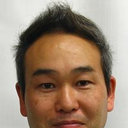Design of hypoxia-targeting drugs as new cancer chemotherapeutics.
Nøkkelord
Abstrakt
The tumor microenvironment is now recognized as a major factor that influences not only the response to conventional anti-cancer therapies but also helps define the potential for malignant progression and metastasis. In particular, hypoxia is now considered a fundamentally important characteristic of the tumor microenvironment. Furthermore, discovery of the hypoxia inducible factor 1alpha (HIF-1alpha) has led to a rapidly increasing understanding of the molecular mechanisms involved in tumor hypoxia. This in turn has led to the current extensive interest in the signal molecules related to tumor hypoxia as potential molecular targets for cancer therapeutics. In this paper we give an overview of recent advances in hypoxia research, including cancer treatments that target tumor hypoxia. Progress in the development of hypoxia-targeting drugs will be discussed, including antiangiogenic hypoxic cell radiosensitizers and hypoxic cytotoxins, hypoxia targeting boron carriers and p53-inhibiting bifunctional radiosensitizers. We will also review our own recent research results in these areas. For example, we have found that certain of the 2-nitroimidazole radiosensitizers and heterocycle-N-oxide hypoxic cytotoxins we developed have antiangiogenic activity and antimetastatic activity. We propose that these activities are based on the inhibition of signal transduction mediated by HIF-1alpha. The anti-tumor activities of hypoxia response are considered to be cytostatic (tumor dormancy-inducing) effects in contrast to cytotoxic DNA damaging effects. The combination of these cytostatic effects that are related to radiosensitization with the cytotoxic effects of radiation should improve the prognosis and QOL of patients receiving radiation and lead to an overall response to treatment. Based on these considerations, we developed the antiangiogenic hypoxic cell radiosensitizers, TX-1877, TX-1898 and the hypoxic cytotoxin TX-402 that inhibits the HIF-1alpha pathway We will also discuss our research involved with the development of other drugs to exploit tumor hypoxia, including a hypoxia-targeting boron carrier for boron neutron capture therapy (BNCT) and a p53 inhibiting radiosensitizer.




